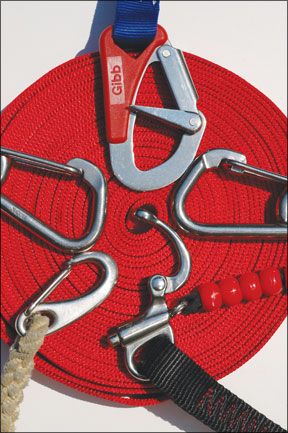288 Heres a frightening question to ponder on your next ocean passage: What would be the worst product for a marine manufacturer to botch? Sadly, a few possible A chart?
answers require no imagination.
Bottom Line:
Stay tuned to ensure that you have the latest digital charts. And don’t chuck those printed charts yet.A seacock?
For years, surveyors, service experts, and this magazine have ranted about cheap ball valves that many builders continue to use instead of high-quality, marine-grade seacocks with mounting flanges. At least one major boatbuilder is now paying for this. Hunter announced late last year that it was recalling dozens of boats with potentially defective ball valves. If youre worried youre among the many owners of boats with this problem, check out “Notifications” link at the Hunter website,www.huntermarine.com.
Bottom Line:
Check and inspect your through-hulls frequently, and service them with each haulout. Replace any gate valves, and upgrade to proper flanged seacocks when time comes to replace existing valves below the waterline.A safety tether?
For a real eye-opener, check out our report on safety tethers starting on page 26. Some retailers, West Marine among them, continue to stock tethers with non-locking jackline clips that, in our opinion, don’t belong on a sailboat. One explanation weve gotten: Some people want a “less expensive tether.” Yeah, and a skydiver would rather save a few bucks on a parachute than land with his spinal column intact.So, whats worse than a tether clip that might open unexpectedly? How about a childs tether that might break?
Our testers put a store-bought Jim-Buoy childs tether through a simple challenge: Could it sustain a 35-pound weight dropped from 3 feet? The cheap polypropylene leash snapped twang! like a street musicians guitar string on New Years Eve. When notified of the results of our test, Jim-Buoy said it was upgrading the rope used in the childs tether to the braided nylon line that it employs in the adult harness/tether.
Bottom Line:
Safety gear is not the best place to cut expenses.



































